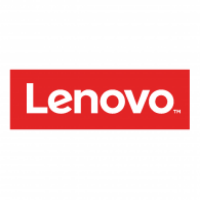
Lenovo
View Brand PublisherChanging the face of IT and business: The Xaas revolution and what it means for startups
‘XaaS’ or everything as a service ‘XaaS’ isn't just another acronym that businesses now need to keep up with. By transforming products, tools, technology and core IT functions into a service, the XaaS model is bringing fundamental shifts to the IT industry.
Why XaaS is the new SaaS
At the outset, the focus for IT solutions providers is no longer about what customers are going to purchase but what they need to achieve their end goals. In doing so, XaaS is reimagining and reevaluating the concept of ownership of productivity tools in the IT realm, like the music and video streaming services did a little over a decade ago. XaaS enables businesses to procure IT resources via a consumption-based, subscription model. This means customers no longer have to take capital ownership of the hardware or other IT assets and pay for what they use each month as part of their operating expenses. In addition, it also accounts for costs associated with hardware installation, deployment, management, maintenance and removal.
Beyond just the cost advantage, XaaS - be it for IT infrastructure or workplace devices - offers a wide range of benefits both for the business and the end users. For one, by combining hardware, software, services, and support together through a single source, users get just-what-I-needed experience. For the business’ IT team, day-to-day management of routine tasks such as device protection services and call centre support services to end-of-life disposal services, among others are taken care of, which means the IT resources can now channelise their efforts on innovative or higher-value projects. And, the XaaS model is especially relevant for a bootstrapped startup as it makes it easier for the business to pivot if and when needed, given the absence of CapEx investments on technology.
Today, XaaS, derived with the SaaS deployment and classification model, has come to include areas such as Platform-as-a-service(PaaS), Infrastructure-as-a-service(IaaS), Desktop-as-a-service (DaaS), Storage-as-a-Service, Disaster-Recovery-as-a-service (DRaaS), among others.
Amidst the COVID-19, the advantage of XaaS was felt more strongly than it ever was. It demonstrated how XaaS enables enhanced IT agility and usability, flexibility, productivity, on the fly scalability, ease of accessibility, higher ROI and limited downtimes. This became extremely critical with the uncertainties associated with lockdowns and change in workplace dynamics. The need to support remote or hybrid work arrangement, brought to the fore the need for new IT and productivity tools. In fact, the 2021 Deloitte Global Human Capital Trends survey named “introduction of digital collaboration platforms” as the most important factor for sustainability of remote work. And, this clearly led to an increase in XaaS adoption.
According to an observation by Deloitte, the global XaaS market was worth US$93.8 billion in 2018. With a compound annual growth rate forecast of 24 percent, industry analysts predict that the market will surpass US$340 billion by 2024. To put it simply, for businesses, - from enterprises to startups - XaaS adoption is now an obvious choice. And, the growth of Everything-as-a-Service is a clear indication of the growing servitisation of digitisation and technology - the fact that anything in the area of IT can be delivered as a service on the internet.
And, the growth of XaaS cannot be spoken of without the growth of the DaaS and IaaS. DaaS is making it easier for businesses to manage their entire workforce through a secure web browser, provide the workforce with necessary files, programs and software, patch, update and manage laptop and tablet deployments, push updates to all users, among others. Not surprising, with the sudden spike in the remote workforce amidst the pandemic, the demand for SaaS grew phenomenally. In fact, Gartner reports showed that DaaS witnessed the most growth among public cloud offerings, increasing 95.4 percent to $1.2 billion in 2020. With IaaS, access to data centre hardware and services becomes one that enables growth rather than restricting it since businesses no longer have to purchase the equipment.
IaaS to Xaas: How Lenovo is supporting business growth
XaaS is at the centre of an innovation revolution. Take for instance, Lenovo TruScale - a comprehensive as-a-Service offering of Infrastructure Services launched in 2019 - that is truly revolutionary, and is changing how IT departments procure and refresh their data center infrastructure. Customers can use and pay for data center hardware and services – on-premise or at a customer-preferred location – without having to purchase the equipment. TruScale then brought both infrastructure and device-as-a-service options under a single umbrella in April this year.
In September, the company further broadened its TruScale offering into an ‘everything-as-a-service’ platform to its entire portfolio. Everything Lenovo sells, from devices to servers and storage, is now a part of the consumption-based, pay-as-you-go model. This meant, customers can now experience, one solution, one contact framework and one point of accountability for everything-as-a-service. And, it doesn’t stop just there. To truly harness the potential of XaaS, Lenovo also broadened new solutions for the platform built in partnership with several of the biggest players in the tech industry, including that of solutions built from Microsoft Azure, VMware, Intel and Deloitte.
The offerings are related to the infrastructure-as-a-service side of TruScale. For instance, Lenovo announced that TruScale has been integrated with Deloitte’s OpenCloud Management Platform - a library of automated playbooks built by Deloitte to help accelerate the time to build and configure new client environments. It serves as a single platform for managing multi-cloud environments.
Lenovo CEO Yuanqing Yang was quoted as saying that the expansion of TruScale has come at a time when the company was witnessing more businesses adopting device-as-a-service and infrastructure-as-a-service for dynamic scaling. Based on Lenovo’s own research and forecasts from IDC and Gartner, the company said as-a-service will encompass 12 percent of x86 server expenditures and over 50 percent of storage infrastructure spending. As-a-service also represents 17 percent of commercial PC purchases, and is growing at a 50 percent CAGR, according to Lenovo.
Lenovo’s XaaS journey is an indication of why the future is XaaS. And, the upswing in adoption of XaaS in the last few months further reinstates the growth of XaaS. A study done by Deloitte which surveyed 600 IT and line-of-business professionals in Q4 2020 showed that 81 percent of adopters said the pandemic has accelerated their organisation's shift to XaaS from traditional IT. As businesses continue to seek more IT control, flexibility, efficiency and how they pay for it, the shift to service-based IT delivery will only grow stronger.












